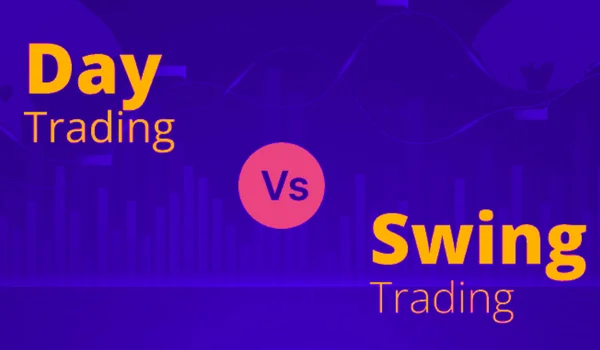The trading world offers two very different ways to try to make money from price moves: intraday trading (buy and sell within the same session) and swing trading (hold positions from a few days to several weeks). In 2025, with faster data feeds, cheaper brokerages, and AI tools becoming mainstream, both strategies have renewed appeal — but they suit very different people, risk profiles, and market conditions. Here’s a clear, actionable comparison to help you choose the right approach.
Quick definitions (so we’re on the same page)
- Intraday trading: Opening and closing all positions within the same trading day. No overnight risk, high frequency, often smaller targets with tighter stops.
- Swing trading: Holding positions across multiple days to capture intermediate moves (typically 3–21 days, sometimes longer). Lower trade frequency, larger profit targets per trade, accepts overnight risk.
Which has the edge in 2025 — macro context
2025 markets are shaped by: higher retail participation, algorithmic retail tools, liquidity concentration in a few mega-cap names, and occasional knee-jerk volatility from geopolitical/news events. These conditions favour swing trading for most retail participants because it allows capitalising on broader trends while avoiding the noise of intraday microstructure. However, intraday still suits disciplined, well-equipped traders who can deploy edge (speed, tape-reading, small fee structures).
Head-to-head: Pros & Cons

Intraday Trading
Pros
- No overnight market risk (news gap risk removed).
- Quick feedback loop — you learn fast.
- Smaller capital requirement per trade if using leverage (but higher risk).
- Potentially tax-efficient intraday turnover for active traders who optimise expenses (consult a tax adviser).
Cons
- Very high emotional & cognitive load — requires full focus during market hours.
- Brokerage and slippage matter — frequent trading erodes returns.
- Needs lightning-fast execution, reliable low-latency platform.
- Higher probability of small losses becoming large if stops are ignored.
Best for: people with full-time availability during market hours, strong discipline, fast platforms, and experience with order types and slippage management.
Swing Trading
Pros
- Lower time commitment — you can trade with 1–2 hours a day of preparation.
- Trades capture larger moves with higher risk-reward ratios (e.g., target 6–15% per trade).
- Brokerage costs lower (less frequent trades), better for those with limited capital.
- Easier to combine with a full-time job or family responsibilities.
Cons
- Overnight and weekend gap risk — earnings, RBI announcements, geopolitical events can cause big moves.
- Requires conviction and patience; positions can go against you for days before moving.
- Requires good position sizing and mental endurance to hold through drawdowns.
Best for: part-time traders, those with limited capital, and investors who prefer rule-based approaches without constantly staring at charts.
Practical metrics: risk, time, capital, tools
- Time commitment: Intraday = full trading session; Swing = 1–2 hours/day.
- Capital needed: Intraday can use margin but watch risks; swing usually needs more absolute capital to avoid over-leveraging.
- Win-rate vs. R:R: Intraday often needs higher win-rate with small R:R (risk:reward); swing trades work with lower win-rate but higher R:R.
- Tools: Intraday — low-latency platforms (Kite, Upstox Pro, Mo), hotkeys, Level II/Market Depth; Swing — robust screener (StockEdge, Trendlyne, TradingView), backtesting, AI insights.
Simple, practical setups you can use in 2025
Intraday setup (example)
- Timeframe: 1-min / 5-min charts.
- Indicators: 20-EMA for trend, VWAP for intraday value, RSI (14) for momentum.
- Rule: Trade only in the direction of 20-EMA bias; entry on pullback to VWAP with RSI >50; stop 0.4–0.8% below entry; target 0.8–1.8% (1:1.5 R:R).
- Position sizing: Risk 0.25–0.5% of capital per trade.
Swing setup (example)
- Timeframe: Daily charts (4-hour for finer timing).
- Indicators: 50-EMA and 200-EMA for trend, MACD for momentum, support/resistance zones.
- Rule: Enter when price retests 50-EMA in an uptrend with MACD bullish crossover; stop below recent swing low (3–8%); target 8–20% depending on stock volatility.
- Position sizing: Risk 1–2% of capital per trade.
Money management & risk controls (non-negotiable)
- Risk per trade: Intraday 0.25–0.5% of capital; Swing 1–2%.
- Max drawdown: Decide a monthly drawdown limit (e.g., 8–12%). Stop trading if breached and review.
- Use stop-loss orders: Never trade without a pre-defined stop.
- Diversification: Intraday focus on 2–4 liquid symbols; Swing: 6–10 names spread across sectors.
- Journalling: Record trade rationale, setups, and outcomes — compound improvement comes from review.
Psychology: what each style demands of you
- Intraday: discipline, rapid decision-making, emotional control during rapid reversals.
- Swing: patience, conviction, capacity to tolerate short-term drawdowns for larger gains.
Where retail traders in India often go wrong
- Overtrading with small edge (intraday).
- Using excessive leverage because of “free margin” (both styles).
- Ignoring transaction costs and slippage — these are killers for intraday.
- Chasing news or “hot tips” rather than following a documented system.
Which should you choose? (Actionable guide)
- Full-time availability, high risk tolerance, and access to fast platforms: Intraday.
- Limited time (2–3 hours/day), family/responsibilities, capital constraints: Swing trading — generally a better fit for most retail Indian traders in 2025.
- Beginner: Start with swing trading to learn patterns and risk controls. Use paper trading for intraday to develop speed and discipline.
- Hybrid: Many profitable traders blend both — swing as core strategy and small intraday trades when a high-probability setup appears.
Final Words
Both strategies can be profitable, but sustainable success comes from: a clear plan, strict risk management, low-cost execution, and continuous learning. In 2025, technology and AI tools reduce barriers — but they don’t replace process and discipline.
Quick checklist before your next trade:
- Is the trade within your written plan?
- Is position size within risk limits?
- Is the stop-loss placed and realistic?
- Have you accounted for brokerage & slippage?
- Can you sleep if the market gaps overnight?

Shashi Kant is the Founder and Editor of BusinessScroller.com, a leading platform for business insights, finance trends, and industry analysis. With a passion for journalism and expertise in business reporting, he curates well-researched content on market strategies, startups, and corporate success stories. His vision is to provide valuable information that empowers entrepreneurs and professionals. Under his leadership, BusinessScroller.com has grown into a trusted source for in-depth articles, customer care guides, and financial expertise.


